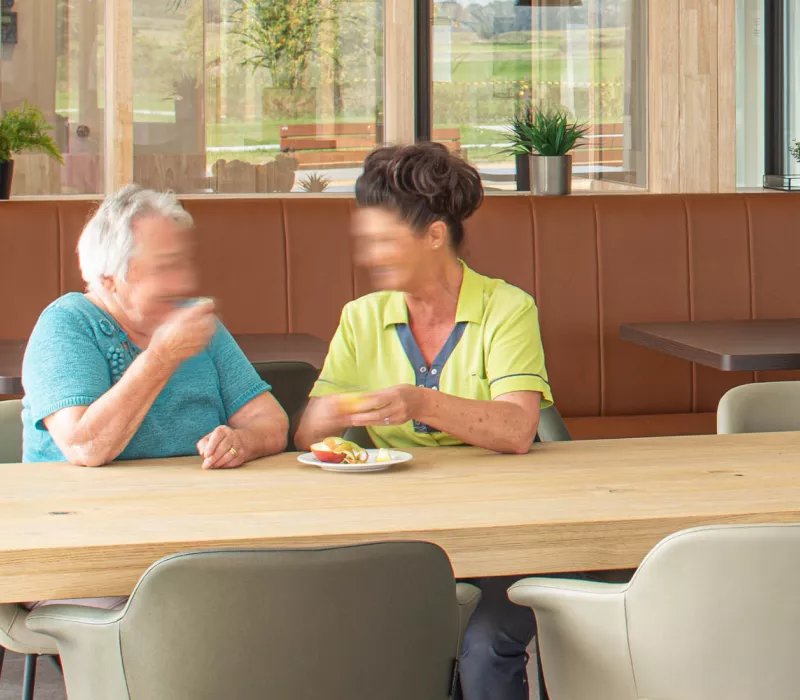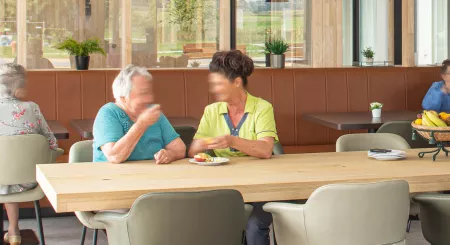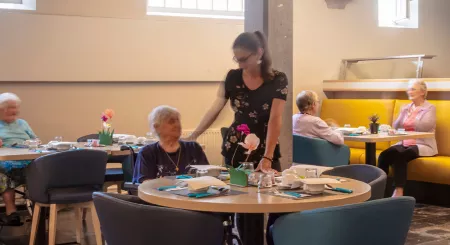The Tubbe Model was brought from Scandinavia to Belgian residential care centres. This care model focuses on relationship-oriented, safe care that includes the participation of residents and staff. In Belgium, a pilot project ran for two years in 80 residential care centres. Saïda Sakali, senior project coordinator at the King Baudouin Foundation, explains how the project went and how it will continue.
“Tubbe” was conceived by a Danish nurse and attracted interest mainly in neighbouring Sweden. It is an organisational model that aims to make residential care centres attractive places to live and work. Autonomy and participation of residents and staff are the basic principles. In 2017, the King Baudouin Foundation began to introduce the model at 6 residential care centres. A few years later, it was expanded to 80, and today the project is undergoing a two-year follow-up period at 200 Belgian residential care centres.
Autonomy and participation
The pilot project was set up to put residents at the heart of residential care centres. “Tubbe is about participation by the residents and that requires a different way of organising,” says Sakali. “You reverse the hierarchy of the residential care centre and start from what the residents want and are able to do.”
Autonomy is a factor in addition to participation. “Tubbe actually works in a demand- and needs-oriented manner. What does someone have to say? What is that person’s life story? If the resident used to be a painter, let him help with refurbishing work. Or have residents help out in a vegetable or sensory garden. Tubbe is customised to every resident and residential care centre.”
For both residents and staff
Staff should also be able to self-manage. This allows a residential care centre to become a good place to both live and work. “You also break standard patterns and habits,” says Saïda. “Caregivers who spend extra time talking in a resident’s room, for example. Today, this is often seen as negative, whereas it should be encouraged. They can assess exactly what is going on and that improves participation. A new generation is coming to residential care centres. This will require a paradigm shift, because their expectations and needs are completely different. You have to respond to this fact if you want to continue to guarantee relationship-oriented, safe care.”
Small-scale living
Living areas also play a role in making participation and self-reliance happen. Creating a warm, homey environment is therefore important. “You accomplish that with furniture and a well-thought-out layout. Not a white, sterile environment,” says Saïda. “Small-scale living can be one aspect of this. Above all, you want to include both residents and staff in a welcoming environment and community. Bring something new to old age by connecting with the neighbourhood. Let a residential care centre be a living environment where everyone is welcome.”
Six principles
At the end of the pilot project, researchers found better relationships between residents. The two-year follow-up phase will now focus on six specific principles. “Each residential care centre will also receive guidance from Tubbe coaches who provide advice on autonomy, joint decision-making, shared experiences of staff and residents, contact with family and the local community, open communication and the management’s role as a coach.”
But isn’t it an ambitious project? “There is still work to be done. Care is not a ready-made model. If you want to guarantee future-oriented, high-quality care, steps must be taken to ensure that residents and staff remain involved and are proud of their achievements. Let go of the hierarchical model and focus on care that is adapted to residents’ needs. The future of elder care lies in building and showcasing real living spaces.”


